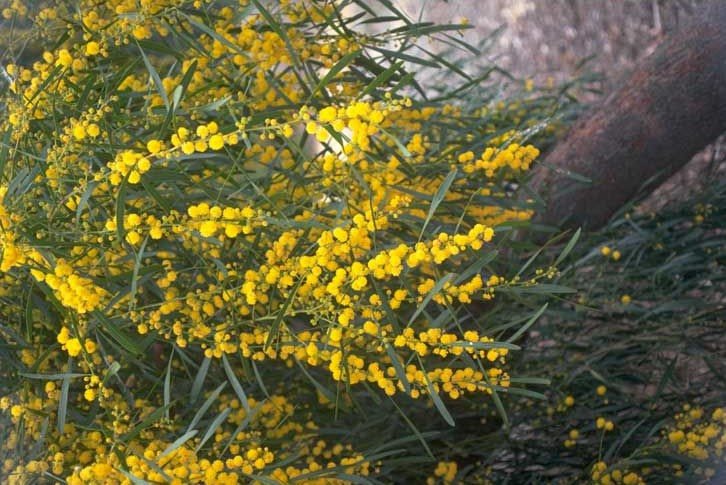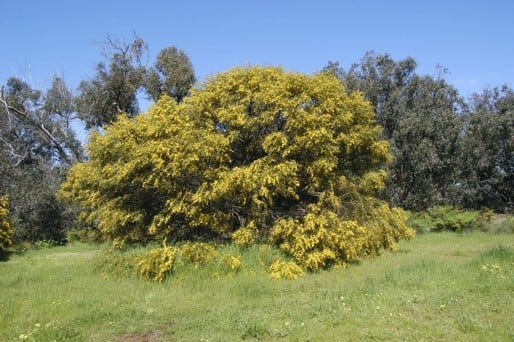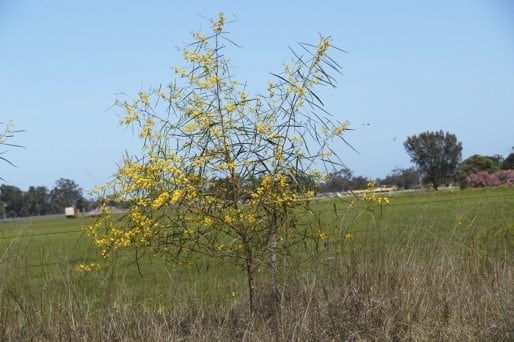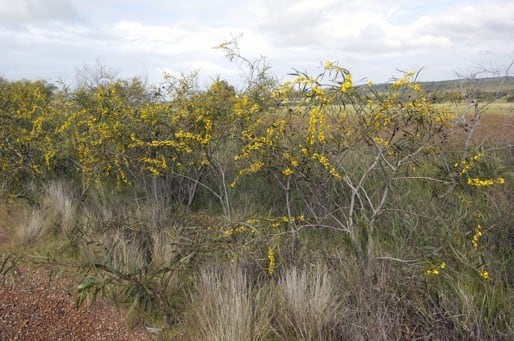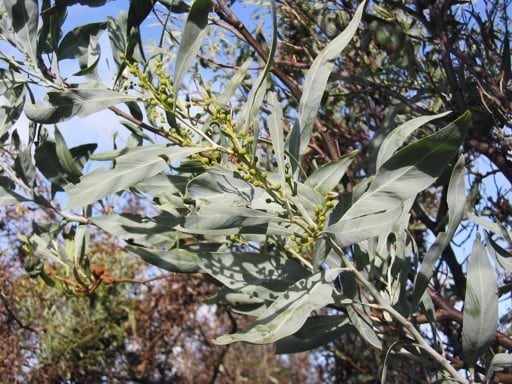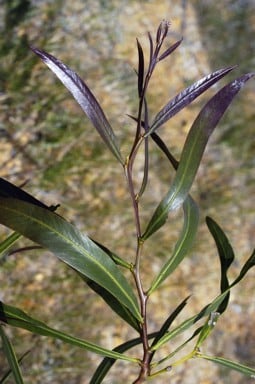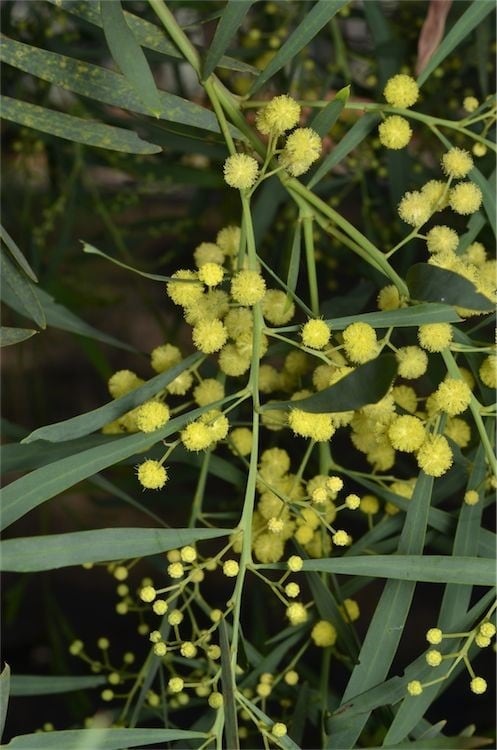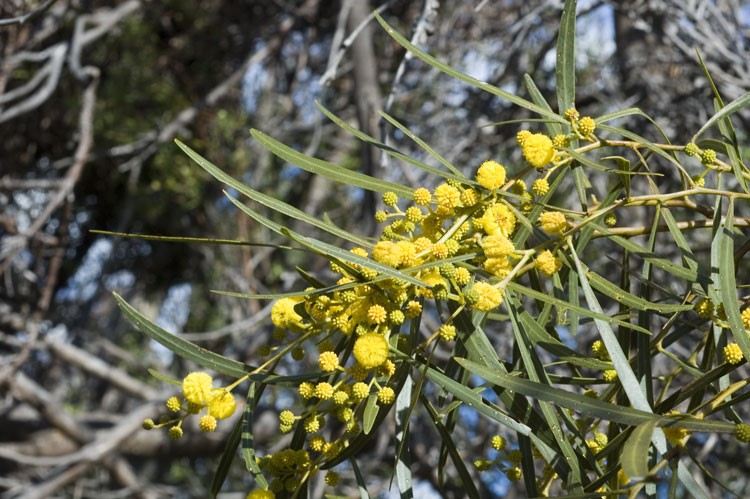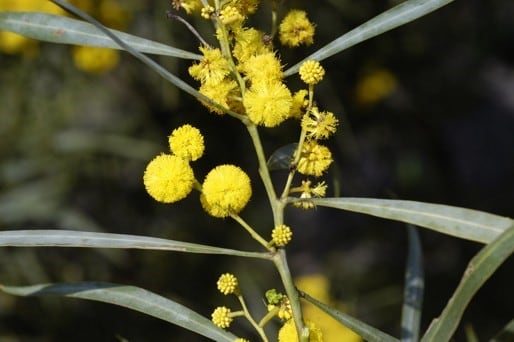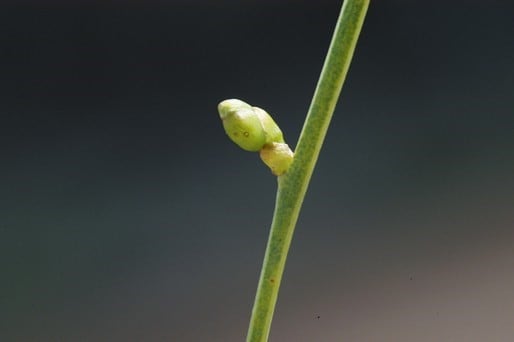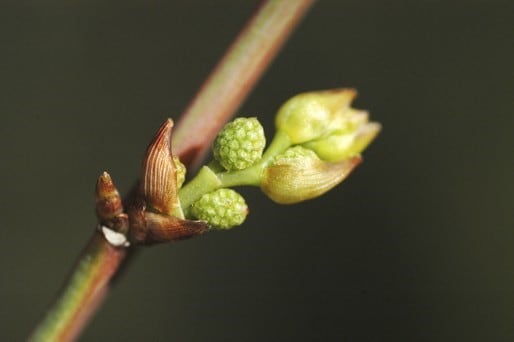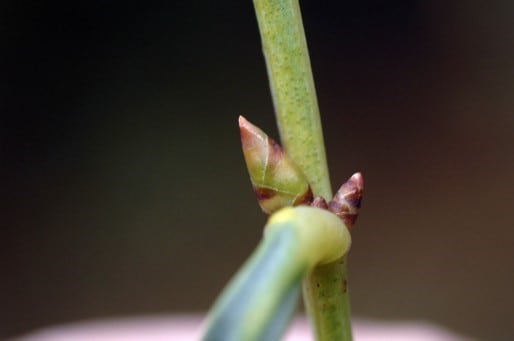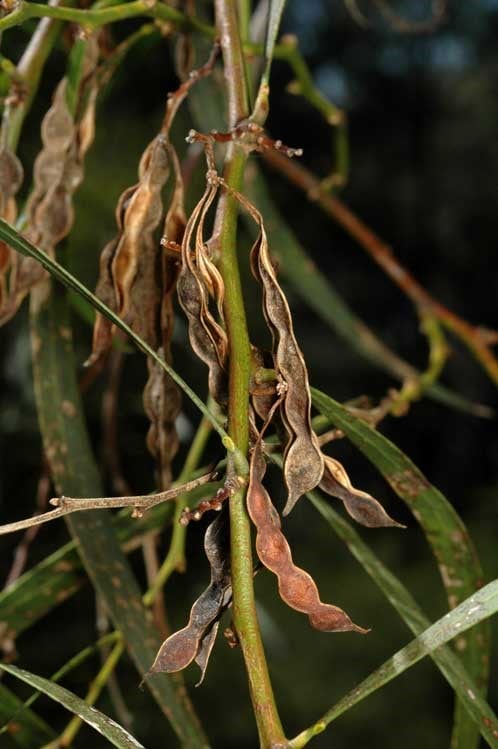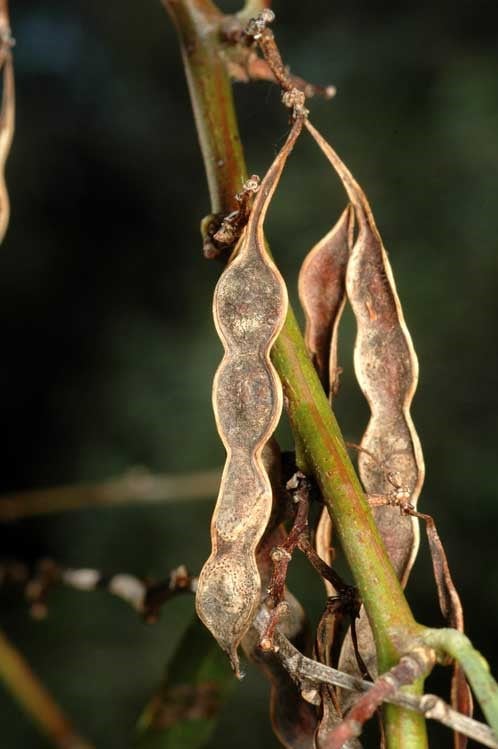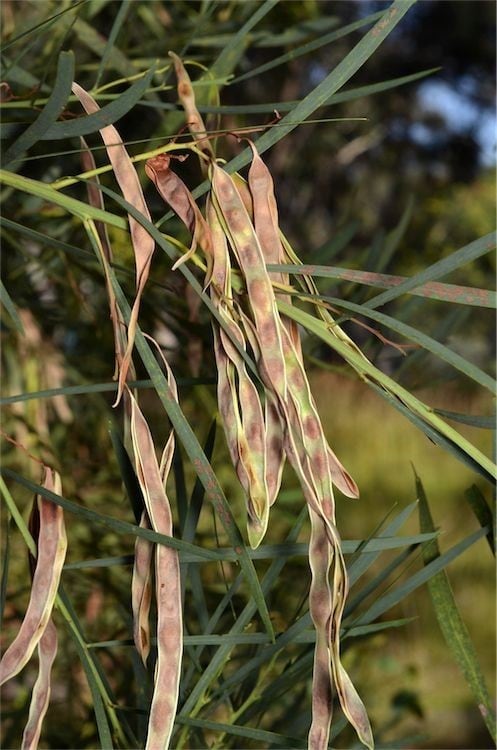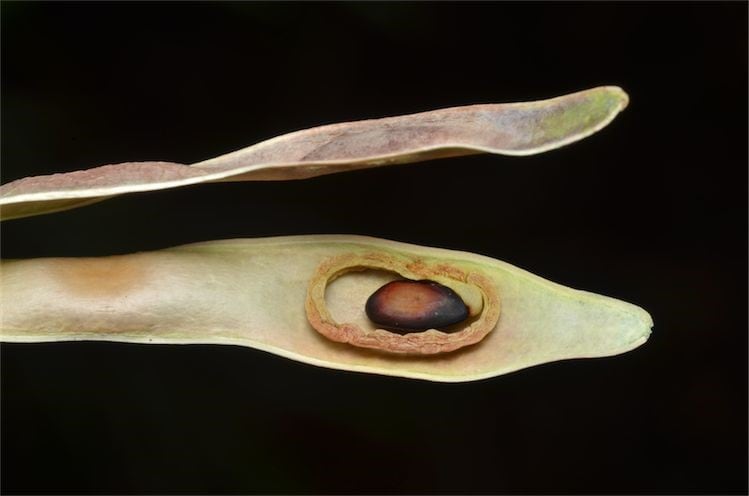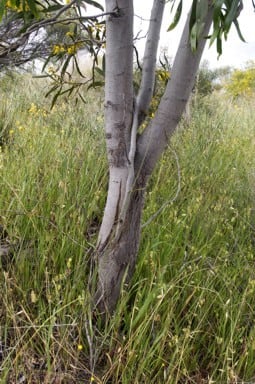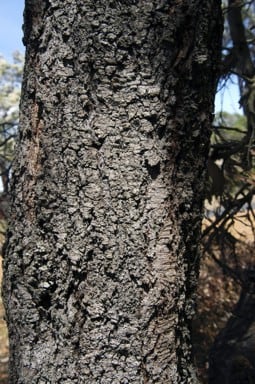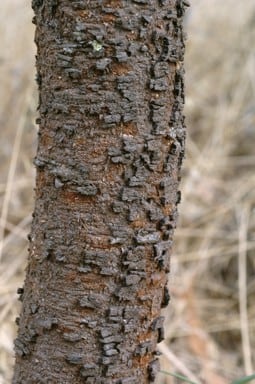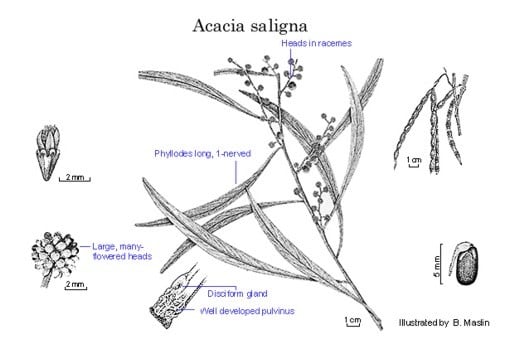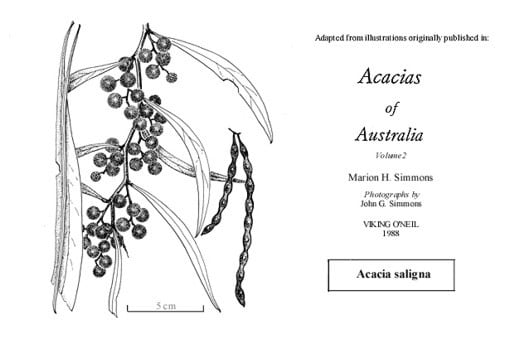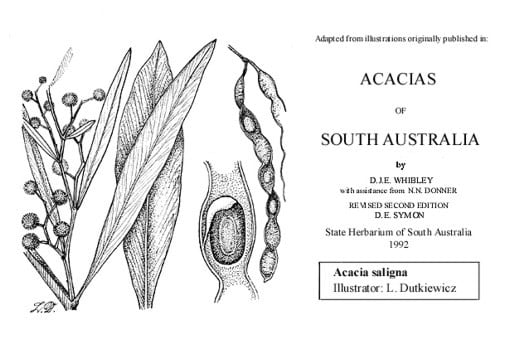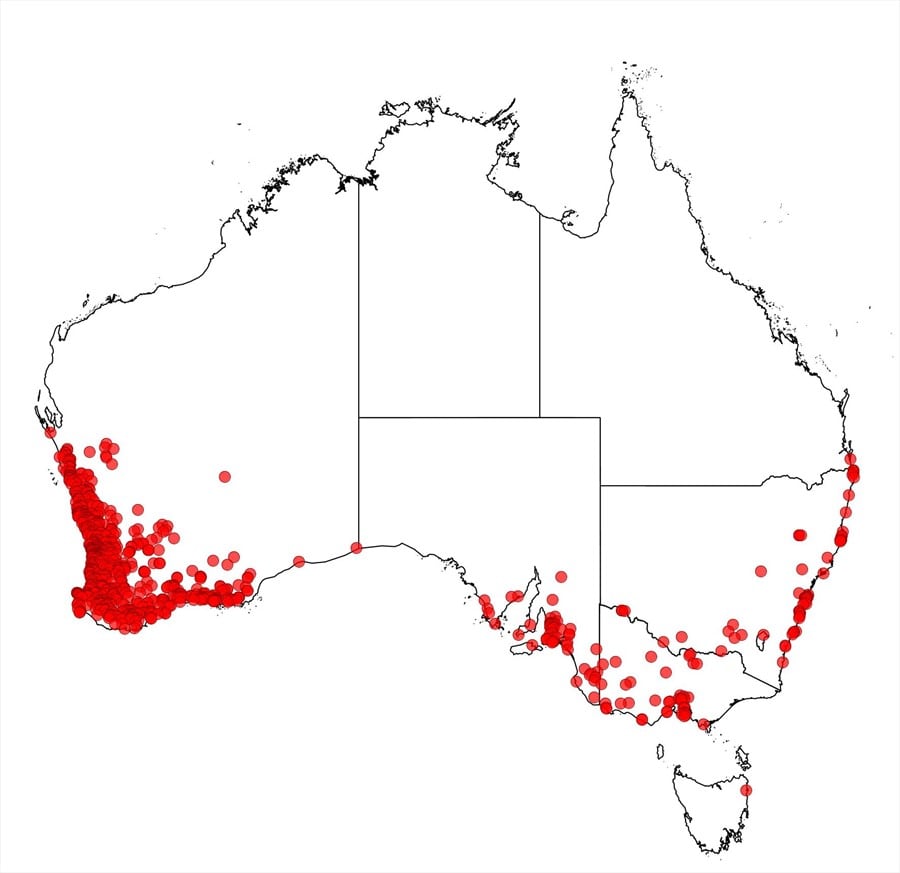Acacia saligna (Labill.) H.L.Wendl.
WATTLE
Acacias of Australia
Common Name
Coojong, Golden Wreath Wattle, Orange Wattle, Blue-leafed Wattle, Western Australian Golden Wattle
Family
Fabaceae
Distribution
Widespread, often common in south-western W.A., extending from Wilgiamia Pool (c. 30 km due NE of Kalbarri) SE to Ponier Rock (c. 65 km due S of Balladonia), but also occurring c. 230 km ENE of Kalbarri on Meka, Murgoo and Jingemarra Stns. Naturalised in S.A., Qld, N.S.W., Vic. and Tas.; widely planted abroad (see below).
Description
Shrub or tree (1–) 3–10 m high, often root-suckering. Bark grey, texture variable (see below). Branchlets normally slightly flexuose, sometimes pruinose, glabrous. Phyllodes patent to pendulous, variable in shape and size, linear to lanceolate, straight to falcate, usually 10–25 cm long and 5–35 mm wide, often larger towards base of plant, green to glaucous, glabrous, with prominent midrib, finely penninerved (absent on very narrow phyllodes); gland ±disciform, 1–2 mm wide, 0–3 mm above pulvinus; pulvinus mostly 1–2 mm long, coarsely wrinkled. Inflorescences mostly 2–10-headed racemes, enclosed when young by imbricate bracts, with bract scars evident at anthesis; buds obtuse to acute or acuminate, 2–7 mm long; raceme axes mostly 2–60 mm long, glabrous; peduncles 5–15 mm long, glabrous; heads globular, mostly 25–55-flowered, mostly golden to lemon yellow. Flowers 5-merous; sepals c. 4/5-united. Pods linear, flat, shallowly constricted between seeds, 8–12 cm long, 4–6 mm wide, thinly coriaceous, glabrous. Seeds longitudinal, oblong to slightly elliptic, 5–6 mm long, shiny, dark brown to black; aril clavate.
Habitat
In W.A., grows in a variety of habitats, including poor sandy soils of the Swan Coastal Plain, clayey soil around Geraldton, the sandplains N of Gingin, the Darling Ra. and the Great Southern region (where it is ±restricted to creeks and rivers), deep sands associated with watercourses (e.g. south coast of W.A.), the base of granite boulders in the wheatbelt, and in coastal dune systems (often forming dense thickets in the hollows between sand hills).
FOA Reference
Data derived from Flora of Australia Volumes 11A (2001), 11B (2001) and 12 (1998), products of ABRS, ©Commonwealth of Australia
Author
Revised by B.R.Maslin
B.R.Maslin
This identification key and fact sheets are available as a mobile application:
URL: https://apps.lucidcentral.org/wattle/
© Copyright 2018. All rights reserved.
